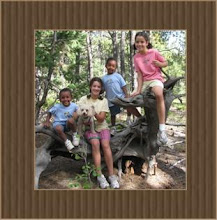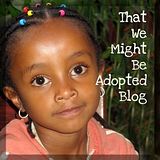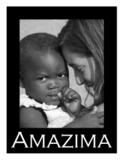1. Nancy Thomas has a REALLY GREAT format in her book, Taming the Tiger While it is still a Kitten. It covers what is normal for each stage and things to look for. If for no other reason this is worth the buy. I have not found such a good overview anywhere else. I don't really know enough about any one therapy practice, so would not be recommending any certain program. But, I DO love this book and others by her and have found them useful with my kids. It is the best resource for this particular question that I have found.
Articles on line that address these questions and give good info regarding spotting attachment issues. None give you normal attachment behaviors.
2. A4everfamily Attachment 101: A Primer for Parents, How attachment relationships impact brain development. Healthy attachment signs two pages here, follow the link.
3. Rainbow Kids list of attachment articles. Here are some of the titles. Good reading.
- Risk for Reactive Attachment Disorder in Adopted children.
- Insta-Attachment and Other Adoption Myths
- Recognizing Attachment Problems in Internationally Adopted Preschoolers
- Smoke Signals
Attachment Problems Subtle and Not-So-Subtle Signs By Arthur Becker-Weidman, PhD
Excerpts from this article:
• Superficially engaging and charming behavior, phoniness
• Avoidance of eye contact
• Indiscriminate affection with strangers
• Lack of affection on parental terms
• Destructiveness to self, others, and material things
• Cruelty to animals
• Crazy lying (lying in the face of the obvious)
• Poor impulse control
• Learning lags
• Lack of cause/effect thinking
• Lack of conscience
• Abnormal eating patterns
• Poor peer relationships
• Preoccupation with fire and/or gore
• Persistent nonsense questions and chatter indicating a need to control
• Inappropriate clinginess and demanding behavior
• Abnormal speech patterns
• Inappropriate sexuality
Subtle signs of attachment issues:
• Sensitivity to rejection and to disruptions in the normally attuned connection between mother and child
• Avoiding comfort when the child’s feelings are hurt, although the child will turn to the parent for comfort
when physically hurt
• Difficulty discussing angry feelings or hurt feelings
• Over-valuing looks, appearances, and clothes
• Sleep disturbances. Not wanting to sleep alone
• Precocious independence
(a level of independence that is more frequently seen in
slightly older children)
• Reticence and anxiety about changes
• Picking at scabs and sores
• Secretiveness
• Difficulty tolerating correction or criticism>
GoodTherapy.org has the above article as well and some other listings. International Adoption Articles Directory also has this and more articles listed. I like this part:
Excerpts from this article:
Older adopted children need time to make adjustments to their new surroundings.
Children who are adopted after birth, even only a few months old, are at risk for attachment problems.
Even infants adopted at birth can have attachment issues related to things experienced in the womb.
5. Rainbow Kids has an excellent article which highlights infant attachment issues.
| Recognizing Attachment Problems in Internationally Adopted Preschoolers |
| July 31, 2007/ Jessica Gerard |
BUT MY BABY BONDED RIGHT AWAY!
Internationally-adopted children are unattached when they first meet their new parents: after all, they are total strangers! The child initially regards the new parent as a yet another caregiver. Children who were already attached to a caregiver will be distressed at being handed over. They will grieve for days, weeks and even months, acting withdrawn and passive, or endlessly crying, or furiously angry. A child who shows no feelings of loss but is happy and smiling from the start may actually have significant attachment problems. A baby who clings desperately to the new mom, and shrieks when separated for a moment, is not instantly bonded, but terrified. It is a trauma bond necessary for survival. Most internationally-adopted children resolve their grief, and gradually and successfully bond with their new parents. Within a few days, the baby or toddler usually shows a preference for mom and dad, has good eye contact, and accepts caresses and comfort. Even unattached babies often learn to love within a few weeks and months, with the care and attention of a loving family.
This is a great article on attachment and the various types of attachment disorders and issues one may find themselves dealing with. It is a very informative article and well worth reading and studying. This site also has a list of more great links to articles on this topic.
Attachment Disorders & Reactive Attachment Disorder
Symptoms, Treatment & Hope for Children with Insecure Attachment
Excerpt:
As children with reactive attachment disorder grow older, they often develop either an inhibited or a disinhibited pattern of symptoms:- Inhibited symptoms of reactive attachment disorder. The child is extremely withdrawn, emotionally detached, and resistant to comforting. The child is aware of what’s going on around him or her—hypervigilant even—but doesn’t react or respond. He or she may push others away, ignore them, or even act out in aggression when others try to get close.
- Disinhibited symptoms of reactive attachment disorder. The child doesn’t seem to prefer his or her parents over other people, even strangers. The child seeks comfort and attention from virtually anyone, without distinction. He or she is extremely dependent, acts much younger than his or her age, and may appear chronically anxious.
Print off this checklist for infant attachment.
check list by age
8. Video on creating a secure attachment with your baby. Here.
9. 4everfamily has a GREAT SUPER WONDERFUL post on what a child with a healthy attachment will be like. Print this one off to use with your kids. I wish I could print it here, but that would be copyright infringement now wouldn't it. So, go over there and check it out. It is superb!
10. Reactive Attachment Disorder (There are tons, here are a few):
http://helpguide.org/mental/parenting_bonding_reactive_attachment_disorder.htm
More links for attachment sites:
Adoption Today magazine on line
attachment check list by age 










































No comments:
Post a Comment
Please leave a comment: